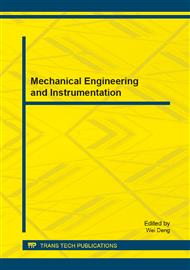p.155
p.164
p.171
p.177
p.182
p.189
p.194
p.200
p.205
Application of Wavelet Transform with Tunable Q-Factor to Analysis of Non-Stationary Harmonics
Abstract:
Harmonics of power system include steady and transient components, extraction and analysis of them can improve the power quality. Tunable Q-factor wavelet transform (TQWT), for which the Q-factor can be easily specified, is adopted to accomplish the extraction of non-stationary harmonic component from the noisy signal. The proposed method decomposes a signal into noise component and non-stationary harmonic component based on suitable Q-factor. Feasibility and effectiveness of the proposed method are verified by the simulation study.
Info:
Periodical:
Pages:
182-186
Citation:
Online since:
February 2014
Authors:
Keywords:
Price:
Сopyright:
© 2014 Trans Tech Publications Ltd. All Rights Reserved
Share:
Citation:


